Unfortunately, nutsedge it is very common across Texas where it invades lawns, flower beds and crop fields. Nutsedge, is often incorrectly referred to as “nut grass”. It is frequently lumped in with tough invasive grassy weeds like King Ranch blue stem and crabgrass. However, nutsedge is not a weedy grass, rather it belongs to the sedge family of plants. Sedge comes in both annual and perennial form and over 3,000 varieties. Sedge is thought to have originated in the areas around the Mediterranean. Yellow nutsedge was one of earliest domesticated crops. The ancient Egyptians farmed this crop thousands of years ago and called it Chufa.
Purple nutsedge, yellow nutsedge and kyllinga are varieties of sedge that are commonly found here in north Texas. Sedge is a tubular weed that grows faster than turf grass and will appear to be taller, darker green blades in your lawn. Do not be fooled by its appearance, this weed is a menace. If it is left unchecked, nutsedge will continue to quickly waltz across your Texas lawn and flower beds.
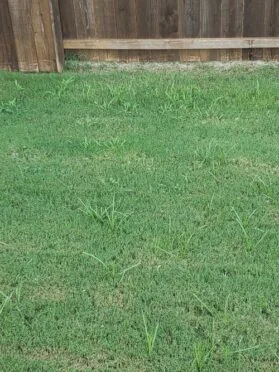
nutsedge weeds in a north Texas lawn
How do you get rid of nutsedge grass?
Nutsedge grass can be very difficult to get rid of. Commonly mistaken for a weedy grass, nutsedge is part of the sedge family and really should not be called a grass. Although it looks like a grass variety, it is not. The best defense with this invasive weed and many other weed issues in your north Texas lawn is to make sure your lawn turf is healthy and dense. A lush, thick lawn will choke out many weeds. By eliminating any bare soil spots in your lawn, the nutsedge and kyllinga as well as other weeds, will have a much tougher time sowing seeds and germinating in your soil. kyllinga can be identified by the long stalks with seed balls as shown in the picture below.
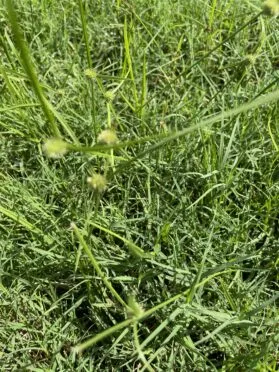
Kyllinga on a north Texas Lawn
The next step is to identify and quickly treat nutsedge when it first appears in your lawn. To the untrained eye, it can look very similar to lawn turf and until the grows taller than the grass, it can be easy to miss. Nutsedge grows very quickly. Within two to three days after your lawn has been mowed, the nutsedge height will be taller than your turf grass. The shape of the leaves is similar looking and even the color of nutsedge can be similar to turf grass. Sedge is usually darker than turf grass depending on the variety of it found in your lawn and grows up straighter and taller than your north Texas turf grass.
If the weed spreads to form small patches, then you should consider a nutsedge killer from your local improvement or gardening retailer. If the nutsedge continues to spread in your north Texas lawn, then you should call a professional lawn care service. Weedex Lawn Care, (972) 727-9207, provides a specialty nutsedge control service with a series of professional grade herbicide treatments to eradicate this troublesome weed.
Does pulling nutsedge make it worse?
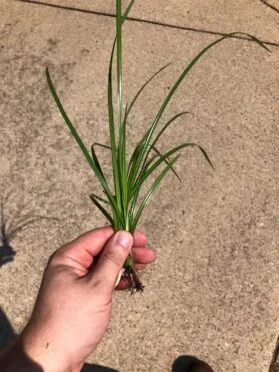
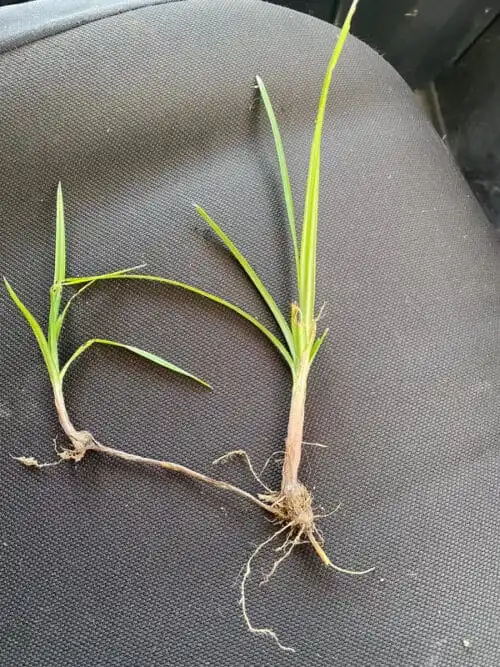
nutsedge weed with rhizome tuber connecter and nut balls
Simply put, pulling nutsedge from your lawn does make it worse. The rhizome tubers buried 8 to 14 inches beneath the soil will just continue to spread and grow. This happens because pulling nutsedge, activates the dormant tubers and nut balls down in the soil that will now grow. Like playing a game of “Whac-A-Mole” the nutsedge you pull up will appear to be gone and in a few days more sprouts will appear nearby. It is best to use a consumer grade herbicide to spot treat small areas of nutsedge. However, if the problem persists or is more prevalent in your lawn, hire a professional weed control service like Weedex Lawn Care (972) 727-9207. They will blanket spray your lawn with herbicides that are only available to licensed professionals. Even with professional grade herbicides, it often takes several treatments to kill off this formidable weed successfully.
Is nutsedge native to Texas?
Nutsedge is not native to Texas, however this invasive weed can be found across the state. Of all the weeds you may tackle, nutsedge is one of the toughest invasive weed species to get rid of. Purple nutsedge, yellow nutsedge, annual nutsedge and green kyllinga are commonly found in Texas. Varieties of nutsedge and other member of the sedge family can also be found across the southern half of the United States ranging from California to Florida with purple nutsedge being the most prevalent. Yellow nutsedge has a higher tolerance for cold temperatures, winter temperatures above zero (0) degrees. This nutsedge variety has been found in every state in the United States except North Dakota and Alaska.
Most sedge varieties do not grow well where winter temperatures are lower than 28 degrees. Nutsedge can be found in seventy countries around the world. It has been very closely studied due to the enormous damage in causes to crops. It creates major difficulties for both famers and homeowners. Famers of beans, cotton, carrots, and other vines crops have reported losses of up to 50% due to this problematic weed.
When should you pull nutsedge?
First, you should only pull nutsedge when it first appears in your lawn. If there is only a handful of these weeds in your lawn you may stand a chance at stopping it. Second, you should only attempt pulling up nutsedge, if you are sure you are going to get all the tubers. It is critical that all the tubers and nut balls below the soil are dug up and disposed of. If you fail to get these parts buried below the soil, the dormant tubers will be activated and continue to spread nutsedge across your lawn. As you can see pulling nutsedge can be very risky, accelerating the spread of this invasive weed if you don’t get it all. The easiest way to remove this invasive weed in your Texas lawn is with the help of a professional.
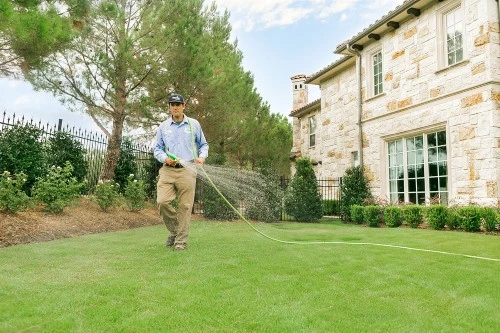
Weedex Lawn Care is local, professional weed control and lawn fertilization company. Our family-owned business has been serving north Texas homeowners with their lawn care needs for over twenty (20) years. If you need help with your lawn, give us a call at (972) 727-9207.
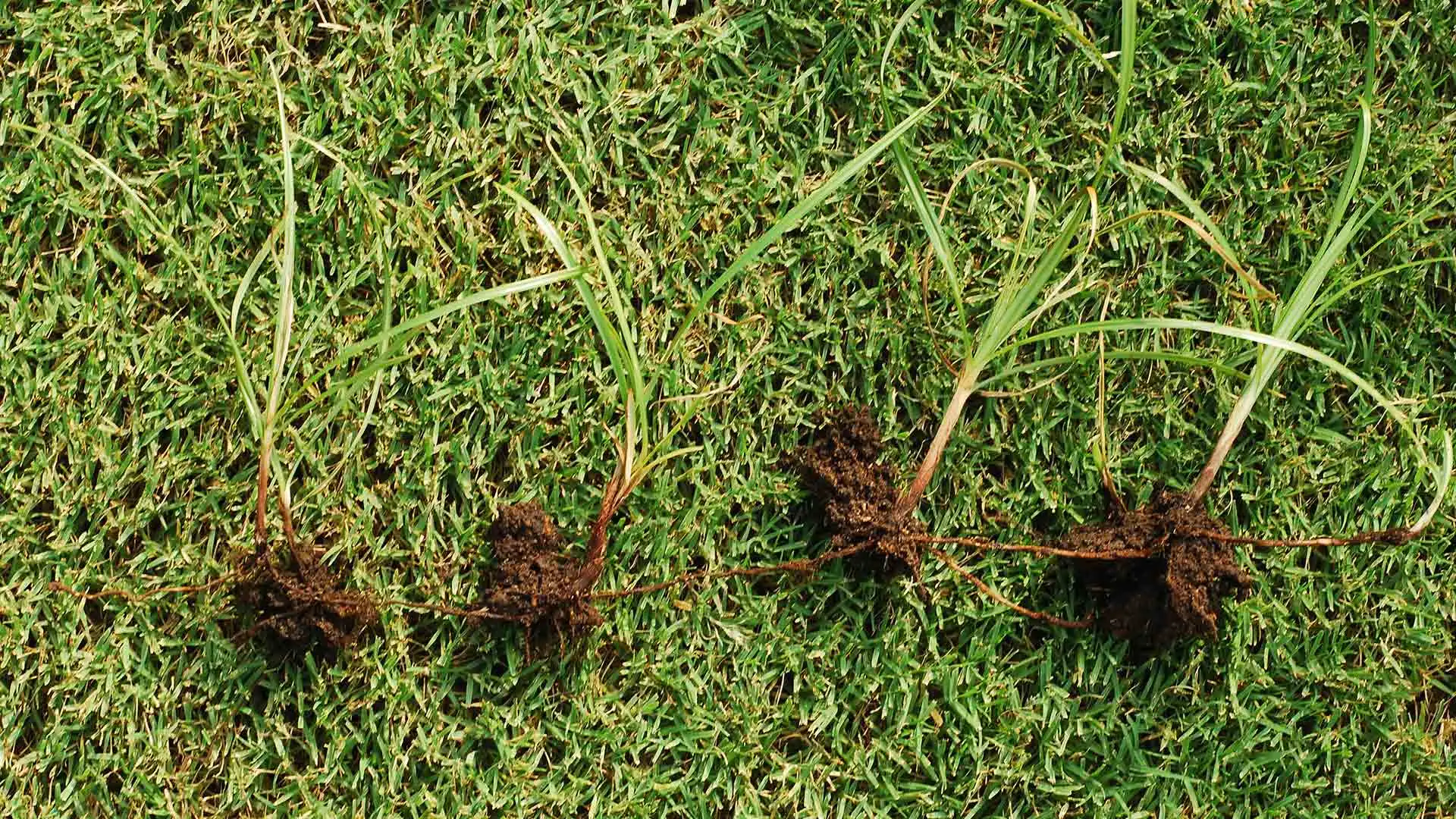

Comments (0)
Thanks for your comment!
Thanks for your feedback! Your comments have been successfully submitted! Please note, all comments require admin approval prior to display.
Error submitting comment!
There is a problem with your comment, please see below and try again.